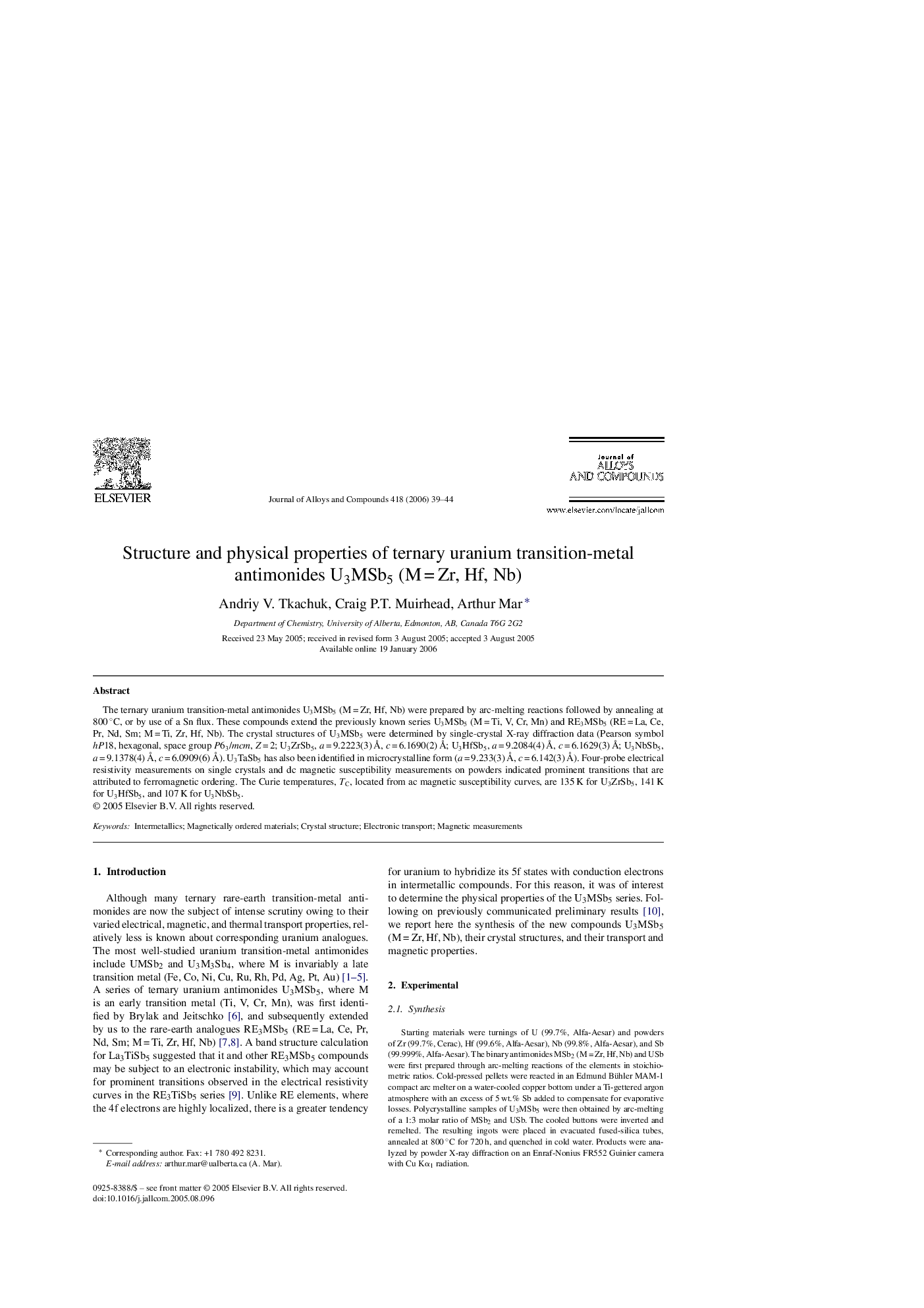| Article ID | Journal | Published Year | Pages | File Type |
|---|---|---|---|---|
| 1627570 | Journal of Alloys and Compounds | 2006 | 6 Pages |
The ternary uranium transition-metal antimonides U3MSb5 (M = Zr, Hf, Nb) were prepared by arc-melting reactions followed by annealing at 800 °C, or by use of a Sn flux. These compounds extend the previously known series U3MSb5 (M = Ti, V, Cr, Mn) and RE3MSb5 (RE = La, Ce, Pr, Nd, Sm; M = Ti, Zr, Hf, Nb). The crystal structures of U3MSb5 were determined by single-crystal X-ray diffraction data (Pearson symbol hP18, hexagonal, space group P63/mcm, Z = 2; U3ZrSb5, a = 9.2223(3) Å, c = 6.1690(2) Å; U3HfSb5, a = 9.2084(4) Å, c = 6.1629(3) Å; U3NbSb5, a = 9.1378(4) Å, c = 6.0909(6) Å). U3TaSb5 has also been identified in microcrystalline form (a = 9.233(3) Å, c = 6.142(3) Å). Four-probe electrical resistivity measurements on single crystals and dc magnetic susceptibility measurements on powders indicated prominent transitions that are attributed to ferromagnetic ordering. The Curie temperatures, TC, located from ac magnetic susceptibility curves, are 135 K for U3ZrSb5, 141 K for U3HfSb5, and 107 K for U3NbSb5.
